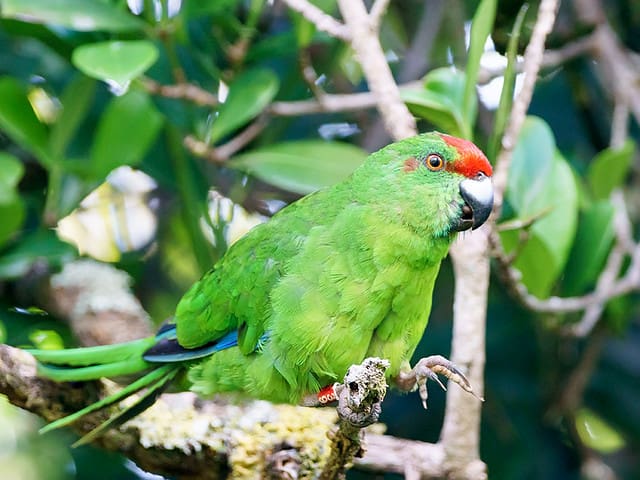Tasman Parakeet Conservation
Historically, two subspecies of Tasman Parakeets occurred on Lord Howe and Norfolk Island. Forest clearance combined with the introduction of invasive mammals severely reduced Tasman Parakeet numbers. On Lord Howe Island, the hunting of parrots to protect fruit crops drove the endemic subspecies to extinction in the 19th century. The chief modern threats to the Norfolk Island subspecies include limited safe nesting cavities and predation by ship rats and feral cats. The population once numbered 190 pairs but by 1994 had dwindled to only four females and about 30 males. As of 2017, after years of recoveries and declines, the population had recovered to approximately 300-400 birds.
For over a decade, working with the Norfolk Island National Park, the World Parrot’s Trust has supported the conservation of Tasman parakeets. WPT has provided technical advice on pilot radio-tracking studies, population surveys and nest monitoring and protection.
The WPT submitted a statement to IUCN regarding the taxonomic treatment of New Zealand parakeets, including Tasman’s Parakeet. Reassigning these birds as separate species could prove positive for their conservation. The WPT’s affiliate New Zealand Parrot Trust recently supported research uncovering genetic diversity and inbreeding in the Tasman Parakeet population following repeated population bottlenecks, which are events that drastically reduce the size of a population. The data found will have implications for the species’ future management.
New research, supported by the World Parrot Trust’s affiliate New Zealand Parrot Trust, examined genetic diversity and inbreeding in Tasman Parakeets. The authors discussed the implications of their findings for the future management of Tasman Parakeets, including attempts to translocate an insurance population. The study highlights the importance of considering population genetics in determining appropriate conservation actions for threatened species.
Status: IUCN Least Concern (as congener of Red-fronted Parakeet) / CITES Appendix I
Population: Fewer than 100 mature individuals.
Range: Norfolk Island (between Australia, New Zealand and New Caledonia)
Natural history: The Tasman Parakeet is confined to the Norfolk Island National Park and adjacent forested areas and orchards. Birds take a variety of fruits, shoots, blossoms and shrub seeds. They also feed on introduced olives Olea africana. Breeding is October-December, sometimes more than once a year. The nest is in a burrow or tree cavity.

